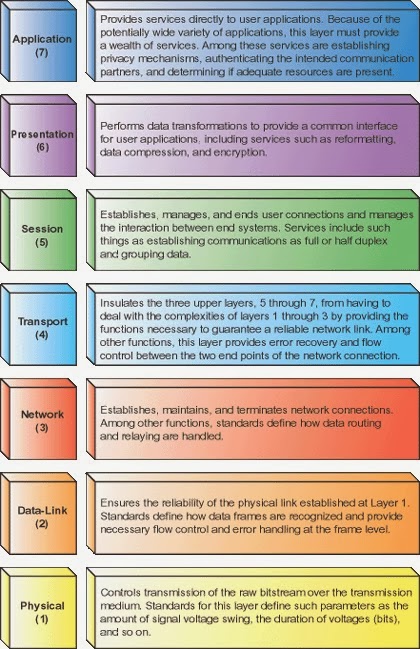Fieldbuses and Industrial Networks
From my book 'Industrial automation, all you should know'
Fieldbuses are industrial communication systems that, using either cables, optical fibres or radio waves for signal transmission, connect field devices to a central control system. They allow distributed control, supervision, detection and command devices to be interconnected.
Using this technology, sensors,
electrovalves, programmable controllers,electronic drives, computers, etc. can
easily exchange information using a single low-cost connection. And this
exchange occurs independently from the manufacturers of single devices.
The concept of fieldbus is not new, but in
recent years it became very popular due both to the increase of the commercial
offer and because the users have understood the clear strategic value that this
technology represents. Why this explosion of interest? (omitted)
The word ‘field’ reminds something that is geografically
and contextually delimited. This is true also in ‘fieldbus’ definition, at different
abstraction levels. On the other hand, ‘bus’, is a typical word from computer
science world that indicates a group of conductors connecting different cicuits
allowing them to exchange data. A fieldbus, therefore... (omitted)
Generally,
fieldbuses allow to transfer data in serial mode, one bit after the other. The
advantage of this choice is that a significantly smaller number of electric
conductors is required (normally, fieldbus cables have only three conductors).This
allows to cover big distances with low costs.
The correct operation of the communication system
requires that the fieldbus is accessed following scrict rules, so that the information
stream can circulate from producer to consumer. The set of these rules is
called ... (omitted)
There are basically several arguments in favour of
fieldbuses:
-
The communication through a fieldbus allows an
information exchange that would be difficult otherways
-
The information exchange occurs following a standardized
mechanism.
-
The network based on fieldbus can be easily
scaled
(omitted)
Concerned industries
To-day, everybody is concerned with fieldbuses.
In cars, for instance, they are used to simplify the cabling and add functionalities
to basic controls. But this example shows that, in the end, the final user is
not really concerned about the fieldbus that has been actually used.
Besides the final user category, anyway, there
are other two categories of professionals concerned:
-
System integrators that, using devices able to
communicate through fieldbuses, have to afford commissioning problems
-
Developers of devices or communication interfaces
for fieldbuses, that have to afford problems of electronic development and
adequate software
The approach of these two categories is different.
To the first catogory it is important to have tools that make commissionin and
diagnostics easier. Moreover, it is preferable that the fieldbus is easy to use.
To the secondo catogory, on the pther hand, it is more important to easily find
the electronic components that allow the maximum simplification of
developement, both of the electronic circuits and of the software managing the communication.
Fieldbus
classification
Before selecting the communication network to
be adopted for a given problem, it is useful to perform an analysis, possibly independent
from commercial influences. The ‘pyramid’ model offers a practical contribution
to this task.
In un ideal plant there are multiple levels of
data management. For each level the requirements are differents. For instance,
administration often manages volumes of data that can be quantified in megabytes,
but response times are not critical (being of the magnitude order of minutes, hours
and even days).
But in working shops and in production areas,
that are the main destinations of fieldbuses, there are more limitations: in
lowest levels, to consider the opposite end, few bytes must be transferred in
few microseconds.
The following levels of communication are
normally defined:
-
Level 0: ‘sensor/actuator’ bus
-
Level 1: fieldbus
-
Level 2: cell bus
-
Level 3: local area network (LAN)
-
Level 4: wide area network (WAN)
These differences represent the selection criteria
of a fieldbus type. In general, for a given application it’s easy to quantify parameters
like the response time and the quantity of data that can be sent.
The fieldbus category concerns only the lowest
levels of the ‘pyramid’ model. This category includes all the buses that can
transmit data frames spanning from some bits to some hundreds of bytes. The
fieldbus category can be furtherly divided into 3 main groups:
-
Real fieldbuses
-
‘Sensor/actuator’ buses, dedicated to I/O
signal interconnection (‘multiplexer’ function)
-
Application-specific buses (for instance,
motion control buses like Sercos, building automation buses like LON,
automotive buses like LIN, etc.).
I'm sorry, I must conclude here. The omitted parts and many other useful informations can be found in my new book 'Industrial automation, all you should know', available in pdf form and very soon on paper.
As an alternative: you can subscribe to my webinars dedicated to industrial automation.
For further informations please write me at valerio@alessandroni.net


No comments:
Post a Comment